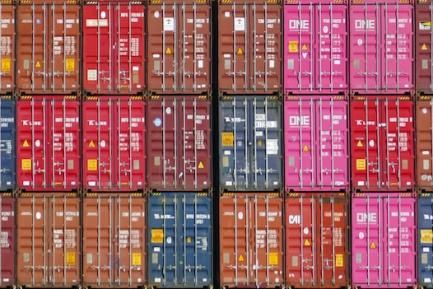The deep roots of polarisation, or on the need to recover the lost narrative
• Historically, when there have been profound economic changes, political polarisation has increased.
• The rise in political polarisation that we are witnessing today has its roots in technological change, globalisation and demographic change.
• Liberal democracies face the enormous challenge of rebuilding a common story.
Political polarisation has increased. In some countries, the phenomenon takes the form of the emergence of new parties whose presence in parliaments makes them more fragmented than in the past. In others, polarisation is primarily reflected in a greater dispersion within traditional parties on issues that are central to society. Finally, some combine both expressions of the phenomenon. In Europe, the first and third variants have arisen, while the US is the prime example of the second (Democrat voters are more progressive and Republican voters more conservative than in the past).1 Although the public sometimes perceives the rise of political polarisation as a recent phenomenon, the academic literature tends to endorse the view that, although it has accelerated in the last two decades, the rising trend has been detectable as far back as the late 1970s. We are, therefore, facing a long-term phenomenon which, no matter how you look at it, represents a structural change in liberal democracies.
Now, does a structural change mean a decisive challenge? Does the increase in polarisation bear fundamental risks to the workings of democracy itself? In short, can we thoroughly address a question that is as important as it is complex and come to a somewhat clearer conclusion on the matter, albeit not a definitive answer, in order to contribute to the social debate? Well, let us at least try.
The past as a guide
First of all, let us see what historical experience tells us. A first observation is that, in the past, a significant increase in political polarisation has been an element present in many profound economic and social changes. Although the contemporaries of each episode did not use our terminology, the increase in the dispersion of citizens’ preferences can be identified in the crisis of the Greek polis, in the Roman republic’s transition into an empire, in the crisis of the Late Middle Ages, in the bourgeois revolutions of the 18th and 19th centuries and, of course, in the debacle of the 1930s. But history can tell us more: in all of these cases, the changes of political regime that occurred were accompanied by a series of profound structural transformations.
Specifically, these episodes of increased fragmentation of political preferences saw a combination of some or all of the following elements: an enlargement of the area that was economically relevant to the society of the time (which we can assimilate to a certain form of globalisation), a significant change in demographic trends and a technological transformation. So, for instance, in the transition from the classical world to the Hellenic, we detect globalisation; in the fall of the Roman republic, we see demographics and globalisation; in the crisis in the Late Middle Ages, demographics and globalisation; in the bourgeois revolutions, technological change, demographics and globalisation, and finally, in the crisis of the 1930s, we once again see all three. Therefore, in this first, historical exploration, we note that political polarisation appears to be present in many systemic political changes, while polarisation also seems to coexist with the three phenomena we have referred to as globalisation, technological change and demographics.
The next step in this intellectual journey must be precisely to try to clarify the relationships that can be established between globalisation, technological change and demographics, on the one hand, and increased political polarisation on the other. After all, if they were important in the past, they should be even more so today, as all three trends are fully present. So, what does the literature on this issue tell us? The main conclusion is that all three trends play a significant part in explaining polarisation, and we can make this statement based on empirical evidence which, although not yet abundant, does offer some rather strong support for the observations mentioned above.
Revisiting the complex relationship between technological change and political polarisation
Technological transformation affects the rise of polarisation through two main channels, that of the labour market and through the media. Let us start with the first of these mechanisms. In advanced countries, studies have shown that technological change puts pressure on wages, increasing the gap between those of highly-skilled workers and those of low-skilled workers. This, in turn, is reflected in an increase in the so-called educational premium: if technological change intensifies the relative demand for high-skilled staff, and acquiring the necessary skills also requires relatively higher educational levels, such higher educational levels will logically result in a more-than-proportional increase in earning potential. In short, technological change contributes to generating «winners» and «losers», who will probably have different political preferences to a greater extent than in the past.2
However, the relationship between wage inequality and political polarisation must be treated with caution. Certainly, some measure of inequality is usually one of the determining factors included in empirical exercises that seek to establish the causes behind polarisation.3 The results are varied and, by extension, not without controversy. In general terms, we can say that, although the apparent association between inequality and polarisation is high, determining the causal factors with certainty is not easy. The most serious studies undertaken on this topic suggest the possibility of a two-way relationship between inequality and polarisation.4 This result seems logic, since in the long term it is possible that changes in polarisation, which may be due to different causes, can result in public policy responses that affect inequality. A prime example of this is the US, where the increase in polarisation among voters of the two major parties has made it more difficult to defend redistributive measures.
Wage inequality, in turn, leads to a phenomenon that is perhaps less key but which, in the US, has nevertheless proven to carry some weight in the debate in question: namely, shifting trends in marriage that could have an impact on the increase in polarisation. Specifically, the existence of the aforementioned educational premium also seems to translate into a trend that is more closely related to demographics, since some authors, such as Fernández and Rogerson (2001),5 suggest that there is an increase in marriages occurring between people with similar educational levels. Ultimately, this means that society becomes more dominated by couples composed of only «winners» and only «losers» of technological change, and few «mixed» couples. The foreseeable result is that the political demands that will emerge in this more demographically fragmented society will also be more polarised.
Alongside the labour market, and as mentioned above, the second area that is important for understanding how technological changes affect political preferences is the media. This is a question that has been studied extensively in recent times, with hot topics such as the rise of digital media, the crisis of the conventional media business model and the difficulty in establishing the veracity of information in this new ecosystem. Although we are far from reaching definitive conclusions, the literature seems to agree that, once the fragmentation of supply and demand (or in terms specific to the sector, the media and the audience) has been established, the two sides of the market feedback into one another through two mechanisms. The first is what is sometimes referred to as the «silo effect», which is that the public seeks out media with a bias that tends to reinforce their preconceptions, thus contributing to an increase in the polarisation of society. A second element is what we might call «content bias», that is, the shift that has been observed in recent decades towards entertainment content, to the detriment of informative and political programmes and spaces (with clear caveats both in time and by location, of course). Given the prevalence of this type of content in what we view, it should be remembered that this trend is not something that has arisen with the birth of the internet, which by the way is not so new anymore, but rather with the introduction of cable channels in the US.
Globalisation, a catalyst for polarisation
The impact of technological change on polarisation, therefore, operates through two major spheres, the labour market and the media. However, it also has an impact on the second of the structural determining factors we mentioned: globalisation. This is an area in which it is difficult to discern specific causal channels, given the close interaction between globalisation and technological change. This is particularly because one of the ways in which technological diffusion occurs is precisely through international trade and because globalisation itself is the result, at least in part, of technological change. Yet, despite this notorious difficulty, attempts have been made to quantify the specific importance of international trade on polarisation. The results, which are still tentative as this is a relatively new area of research, seem to point towards a significant effect in both the US and Europe. In the first case, as Autor and his co-authors argue (2016), it has been found that in the electoral districts most affected by increased trade with China there has tended to be a reduction in more moderate representatives. In Europe, meanwhile, according to Colantone and Stanig (2017), the growth of Chinese imports can be associated with greater support for more polarised political positions.6
In more general terms, one can argue that globalisation (more or less fuelled by technological change) is a factor that exacerbates pre-existing cracks in Western societies, rather than causing new ones. This is the thesis of Rodrik (2018),7 among others, who points out some of these divisive point, such as the opposition between mobile professionals and local producers, between regions and sectors that are competitive in globalisation and those that are not or, as already mentioned above, between skilled and unskilled workers.
The demographic vector: generations and migrations
The third major structural area mentioned earlier is demographic change. This is an area fraught with traps that lends itself to simplistic readings, so it is important to be precise. First of all, it seems logical to think that if the population is more diverse than in the past in Western societies, the political expression of these societies could also be more heterogeneous. Two of the major channels through which the diversity of society has materialised in recent decades are the greater polarisation of values and opinions between generations (which is usually referred to as the generation gap), and the fragmentation of preferences generated by the phenomenon of immigration. The first of these issues, the generation gap, has already been studied earlier in the pages of our Monthly Report (Murillo and Ruiz, 2018). Indeed, as to the question of whether millennials are more «extremist» than previous generations, it is noted that the most extreme positions on the spectrum of ideological preferences are more «populated» than in previous generations (known as Generation X and the baby boomers).8 In addition, the figures suggest that the positions on both sides of the ideological spectrum are more extreme than in previous generations, but they are positioned to the left and right to practically the same degree. In any case, and to avoid reading too much into «extremism», it should be remembered that millennials on the far left or the far right represent a minority (slightly more than 11% of millennials, counting both extremes), as is the case in all the generations for which there are data.
The second factor that has made Western societies more diverse is immigration. This is a field littered with prejudices and, therefore, we must be especially careful to separate what appears plausible from what we really know based on the empirical evidence. Firstly, it should be remembered that having a significant proportion of immigrants does not in itself lead to a high degree of political fragmentation. The most successful historical example of diverse populations being integrated into a community with relatively homogeneous values is that of the US. This is a nation that has managed to accommodate an increase in diversity without ceasing to achieve what Francis Fukuyama calls an identity, that is, having a set of shared values that make you a member of a community (the famous North American melting pot).
However, in the last few decades a shift seems to have occurred even in the US, since public perception of immigration has been fragmented – a trend that will make achieving that harmonious melting pot that once characterised the country more difficult. Thus, according to data from the Pew Research Center, in 1994, when Democrat and Republican voters were asked whether immigration was a burden in terms of lost jobs and social costs (this was the question posed in the survey), the issue raised almost the same percentage of affirmative answers in both groups (with only 2 points between the two). In contrast, in 2014 the proportion of Republican respondents that considered immigration a problem was 19 points higher than that of Democrat supporters.9 Something similar could be happening in Europe, albeit with its own hues. According to data from the Pew Research Center in 2018, it was observed that, in a significant sample of European countries, negative opinions towards immigration were more common at the tail end of the right-wing ideological spectrum than in the centre or on the left.10 When the difference between right-wing and left-wing respondents who consider immigration «a burden» is calculated, the former exceed the latter by 23 points. It seems, therefore, that the issue of immigration is an important factor in the way in which polarisation is manifesting itself within the two main US parties, as well as in the ideological spectrum of Europe.
Do these three factors (technological change, globalisation and demographics) exhaust all the possible explanations? For the sake of completeness, we must remember that there is a very rich debate over the relative importance of other, so-called cultural factors. In essence, the underlying idea is that secular changes in Western societies, such as the shift towards a tertiary economy, have led to a dual effect consisting of so-called economic insecurity (de facto, already implicit in the factors mentioned above in this article) and an increase in diversity. Combined with a shift in previous decades towards post-materialist and socially progressive values, these effects have generated what authors such as Pippa Norris and Ronald Inglehart refer to as a cultural backslash from segments that are more conservative on social matters in Western countries. This, in turn, has contributed to an increase in more ideologically polarised positions. Although this thesis is being subjected to an extensive academic debate and is far from being widely accepted, it is nevertheless suggestive of the idea that the strictly economic factors that are supposedly driving polarisation need to be considered in conjunction with other value-based and «soft» factors. In similar exercises in these same pages, we have reached similar conclusions: the increase in polarisation can be linked, to some extent, to cultural factors, meaning that it cannot be attributed exclusively to economic factors.
And despite everything... the future is not written
It is time to recap and to envision the future. If we were to end this article here, the summary could be as follows: history tells us that political polarisation is present in many secular political changes and that the underlying factors that have fuelled the increase in polarisation in the past (in particular, technological change, globalisation and demographics, as well as perhaps cultural factors) are active in our contemporary societies. So, what conclusion can we reach? Are we inevitably moving towards a new period of profound political change? Here, the reader could be waiting for a vague response, along the lines of «the future, as we know, is so uncertain...». But, for once, and without setting a precedent, we are going to step off the fence and draw a definitive conclusion: this outcome is not written in stone. The structural factors mark a direction, but they do not determine the destination, especially in societies fortunate enough to have democracy. Churchill was probably right: democracy is the worst form of government, except for all the others. In that same spirit, today’s liberal democracies are imperfect and show signs of their age, there is no doubt about it. But their quality and, above all, their potential for improvement should ensure that, even in the face of growing polarisation, ways can be found to create consensus and revive the essential common story that every society needs in order to build its future.
Àlex Ruiz
1. For an in-depth description of the phenomenon of political polarisation, see the article «Political polarisation: the phenomenon that should be on everyone’s lips» in this same Dossier.
2. On this topic, see, for example, the article «Inequality and populism: myths and truths», in the MR01/2017.
3. Without looking any further, see the Dossier «Polarisation: the legacy of the financial crisis and other contextual forces», in this same Monthly Report.
4. See J.V. Duca and J.L. Saving (2016). «Income inequality and political polarization: time series evidence over nine decades», Review of Income and Wealth, 62(3), 445-466.
5. R. Fernández and R. Rogerson (2001). «Sorting and long-run inequality». The Quarterly Journal of Economics, 116(4), 1305-1341.
6. See D. Autor, D. Dorn, G. Hanson and K. Majlesi (2016). «Importing political polarization? The electoral consequences of rising trade exposure». National Bureau of Economic Research n° w22637; and I. Colantone and P. Stanig (2018). «The trade origins of economic nationalism: Import competition and voting behavior in Western Europe». American Journal of Political Science, 62(4), 936-953.
7. See D. Rodrik (2018). «Populism and the Economics of Globalization». Journal of International Business Policy, 1-22.
8. See the article «Millennials and politics: mind the gap!» in the Dossier of the MR04/2018.
9. Pew Research Center (2014). «Political Polarization in the American Public».
10. Pew Research Center (2018). «In Western Europe, Populist Parties Tap Anti-Establishment Frustration but Have Little Appeal Across Ideological Divide».




